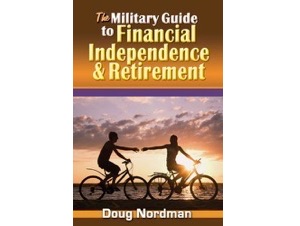Table of Contents
The Survivor Benefit Plan is designed to provide survivors of deceased military retirees with a portion of the retiree’s pension. This earlier post describes the SBP and its options, as well as the pros and cons of buying it for your survivors. If you landed here from a search engine or some other link then I’d recommend reading the previous two posts before proceeding with this one.
Some of the references and links in this post include articles from the Association of the United States Navy (AUSN), a support group for sailors and officers formerly known as the Navy Reserve Association. Although AUSN is a Navy organization, the SBP is covered by Congressional legislation implemented by the Department of Defense for all services, both active & Reserve/Guard components.
What is the Reserve Component Survivor Benefit Plan?
The Reserve Component Survivor Benefit Plan (RCSBP) enables people who served in Reserve Components to leave heirs with a benefit called an annuity.
An annuity is a monthly payment that pays your beneficiary for the balance of their life after you pass away. The amount of the monthly payment is a percentage of your retired pay, and depends on the election you make when you sign up for RCSBP.
The Reserve Component Survivor Benefit Plan (RCSBP) is similar to the Survivor Benefit Plan (SBP) that covers non-reserve components of the armed services.
The SBP was enacted by Congress in 1972, and the Reserve Component SBP was added in 1978. The RCSBP sells insurance to Reserve/Guard who have applied for retirement but who are not yet age 60 (“gray area”). Once they reach age 60, their RCSBP is the same program as the SBP but with slightly different premiums to cover a portion of the cost of the years before age 60. Congress pays about 40% of the program and the rest is covered by the retiree’s premiums paid to the SBP and the RCSBP.
Although only about 75% of active duty retirees buy the SBP annuity, over 90% of retiring Reserve/Guard enroll in the RCSBP. The difference appears to be the inexpensive insurance coverage during the “gray area” years before age 60, and the fact that premiums aren’t due until age 60.
The Reserve Component Survivor Benefit Plan (RCSBP) is like the Survivor Benefit Plan (SBP) annuity that covers non-reserve components of the armed services.
However, there are several differences in eligibility between the RCSBP and SBP, including coverage and costs, that reflect the unique nature of reserve service.
RCSBP is another incentive offered by the Department of Defense to encourage Reserve/Guard to retire awaiting pay instead of resigning pending retirement. When Reserve/Guard members reach 20 years of qualifying service they can either apply for retirement (awaiting pension at age 60) or resign from the Reserve/Guard until their pension starts (at age 60).
For the DoD, the difference is that “retired awaiting pay” means the member can be recalled in the event of a full mobilization of the armed forces. (Even though recalling a retiree is highly unlikely.) There are a number of financial reasons to retire instead of resigning, and an additional reason is that Reserve/Guard who have “retired awaiting pay” can buy SBP coverage for their beneficiaries.
Another reason to buy RCSBP coverage is that it starts as soon as the Reserve/Guard member retires instead of at age 60. It’s possible to reach 20 years of qualifying service in your late 30s and wait over two decades before drawing the pension at age 60. If SBP is elected at the time of applying for retirement, then the Reserve/Guard member has SBP coverage for that entire time before age 60. By law, upon retirement, the member is automatically signed up for full coverage. The decision to reduce or decline coverage is actually made by the spouse.
If the retiree dies prematurely then one of their survivor’s options would be to receive up to 55% of their pension immediately instead of waiting until they would have been age 60. The Reserve/Guard member doesn’t actually have to pay the SBP premiums for that coverage until their pension starts. In other words, Reserve/Guard who have “retired awaiting pay” can have over two decades of “free” insurance coverage before they even start drawing their pension.
Better still, at age 62 (after paying two years of SBP premiums) they can either continue their SBP coverage or cancel it.
The RCSBP has three options:
- A: Decline coverage until age 60 and revisit the decision then.
- B: Deferred Coverage – If you die before age 60, a RCSBP annuity begins paying out on what would have been your 60th birthday.
- C: Immediate Coverage – The RCSBP annuity would begin on the day after your death, even before age 60. This is the default option.
The annuity is based upon the retired pay earned by you. Your retired pay cannot be continued after your death: only you may draw the retired pay that you earned. Under the RCSBP, if you have 20 qualifying years of service, you can designate to whom you want the annuity to be paid.
RCSBP – Eligible Designees
The designee(s) may be your:
- Spouse – The widow or widower of the deceased service member who was married to the service member at the time of his or her death and who:
- Was married to the service member for at least one year prior to the service member’s death
- Was married to the service member at the time of RCSBP
- Is the parent of a child born after the RCSBP election was made.
- Former spouse – The service member may elect former spouse SBP coverage within one year of the divorce if the service member previously covered that person as Spouse.
- Children – The child of the deceased service member is eligible for coverage when he/she is
- Single and under the age of 18, or
- Between the age ages of 18 and 22 and enrolled in a full-time course of study or training in a recognized education institution, or
- Incapable of self-support due to mental or physical disability that existed before the child’s 18th birthday or was incurred before age 22 while the child was engaged in a full-time course of study or training.
- Person with an insurable interest in the service member – A person who has a logical and/or lawful reason to expect financial benefit from the continued life of the service member. The expectation is founded on the relationship between the parties (financial, blood, marriage or mutual affection).
NOTE: If you have received a 15-year letter authorizing early retirement at age 60, you are also offered this benefit.
The RCSBP’s enhanced “free” gray-area coverage comes at a price: the premiums are calculated at a slightly higher rate than the conventional SBP’s 6.5%. The premiums are determined from data tables and fact sheets provided when the Reserve/Guard member receives their notice of eligibility for retirement (20 good years). Members can also estimate their payments from a RCSBP calculator.
Spouses can elect the full amount of coverage (55% of the Reserve/Guard pension) or smaller amounts. As discussed in the last post, the decision should be based on the survivor’s projected spending or to insure the ability to pay off a large expense such as a mortgage.
Who Can Receive the RCSBP?
The RCSBP is available to members of the following retired Reserve Components:
- The Army National Guard of the United States
- The Army Reserve
- The Navy Reserve
- The Marine Corps Reserve
- The Air National Guard of the United States
- The Air Force Reserve
Reserve Component Survivor Benefit Plan Cost
You pay the cost of participation in the RCSBP when you start to receive retired pay at age 60. Upon your death, the RC cost is transferred to the annuitant. Once you make an election you may not cancel your participation in RCSBP.
Costs to participate vary and are based on your age and the age of your annuitant at the time of the election, the option you select, the base amount that you select, and your retired pay.
Here’s how you can approximate your RCSBP costs.
Compute your retired pay using the retired pay formula:
[(Your total retirement points / 360) x 0.025] x monthly active duty pay for your rank and years of service = your monthly gross retired pay
RCSBP is comprised of two costs: the base SBP premium cost that all active and reserve service members pay (called the BASE cost); and the RC cost which is the cost for carrying your annuity without payment until you reach age 60.
Your BASE cost is: 0.025 of the first $701 (threshold amount) of your retired pay ($17.53), plus 10 percent of all remaining retired pay over $701, if your projected retired pay will be $1,502 or less per month.
If your retired pay is projected to be more than $1,502 per month, the BASE cost will be 0.065% of the projected monthly pay. For example, if you project that your monthly retired pay will be more than $1,502 each month, let’s say $2,000, then your monthly payment Base cost would be $2,000 x 0.065 = $130.00
The second part of the RCSBP cost is based on your monthly retired pay, as well as your age and the age(s) of your annuitant(s) at the time you make the election. Refer to the SBP Fact Sheet provided with your Notification of Eligibility (20 Year Letter) for Retired Pay at Age 60 for more information.
RCSBP Benefit Amount
RCSBP pays designated annuitants 55 percent of your retired pay. There are several variables that apply to your specific situation and impact the amount you receive. The SBP cost factors displayed are based on spouse-only coverage.
Military Guide to Financial Independence
This book provides servicemembers, veterans, and their families with a critical roadmap for becoming financially independent. Topics include:
- Military pension
- TSP
- Tricare Health System
- & More





Comments:
About the comments on this site:
These responses are not provided or commissioned by the bank advertiser. Responses have not been reviewed, approved or otherwise endorsed by the bank advertiser. It is not the bank advertiser’s responsibility to ensure all posts and/or questions are answered.
Terry W says
Doug
Who would pay the cost of the SBP post divorce? Would I continue to pay it or would an ex-spouse become responsible for the costs?
Additionally, I am curious as to if DFAS will deduct taxes from the amount provided to an ex-spouse?
Terry